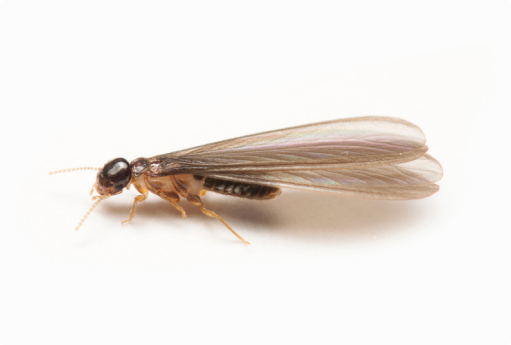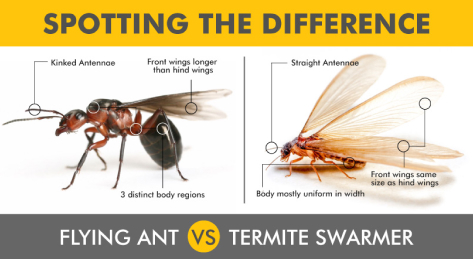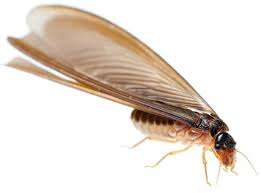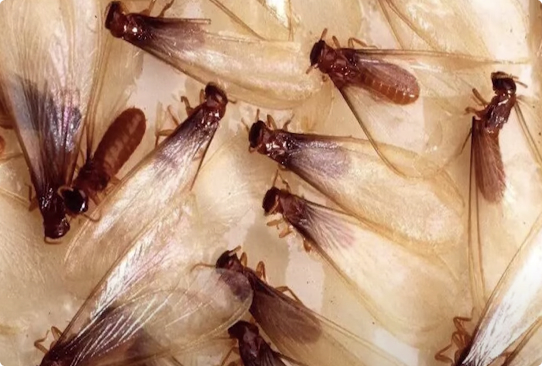
Have you just found all these winged insects inside your home?
Wondering what they are?
Spring and early Summer months offer humid, warm nights, perfect conditions for reproductive termites to take to flight en masse, searching for a mate to establish their own colony. It’s freaky how all the nests throughout South East Queensland know that this is the night to party!
Each colony has been breeding thousands and thousands of winged termites (Alates) throughout the Winter and Autumn. Once they get the green light, they start to swam from an exit hole constructed near their nest. You can see these holes high up in gum trees that appear like bleeding wounds. The higher the exit hole, the better the winged termites have to launch out and catch the breeze, as they are not great flyers. Basically, they will travel to where the breeze takes them.
Conquer Termites often get questioned about the difference between flying ants and flying termites.
There are three easy ways to tell them apart.
WINGS – flying termites have equal wing lengths, whereas flying ants have unequal wing lengths (one set of wings is also noticeably larger than the others).
ANTENNAE – flying termites have straight antennae vs the bent antennae of flying ants
WAIST – flying termites have a straight waist vs the pinched waist of flying ants.

Don’t panic! Collect a few of the winged termites (they might have shed their wings by now) and place them in a clip locked plastic bag and place that in the fridge. We want you to do this so we can clearly identify that they are termites and not just black ants. Now you have permission to grab a can of insect spray and blast away. We know you want to!
If you actually see the winged termites coming out of a hole inside your home, panic! Call us straight away.
Otherwise, you should give us a call to arrange a thorough termite inspection to gain peace of mind that there are no issues in your home or in the garden.
Normally termites are only in their subterranean tunnels under the ground. But from November to March, it is common to find the reproductive termites taking to flight, especially in South East Queensland. The humidity is very attractive (indeed necessary) to them.
At this time of year, they leave the nests (trees, tree stumps, bushland, even your home) to fly and begin new colonies. This is what they look like (although they can vary somewhat in colour).

All termite species operate a caste system (in fact, their only real commonality with ants). One of their castes is the winged reproductive alates – or flying termites. They can be mistaken for flying ants, but it is relatively easy to spot the difference.
When a termite colony reaches a certain size and maturity several thousand reproductive termites will start growing wings, preparing for a once in a lifetime flight. It can take a few months to get them ready for their big flight and during this time they’ll be given the best of the food and will be taken care of. When they are ready, and when weather conditions are right (some of them swarm after rains, most when the weather is very humid. Most swarm at dusk), thousands and thousands of them can take flight from nests is the area, preparing to start new ones.

You’ll often see these winged or flying termites swarming around lights, whether street lights or your outdoor light if it’s left on. It’s there that they meet other termites of the same species, also swarming from their own colonies. After this, the fertilised alates shed their wings and go in search of a spot to make a nest and begin a colony of their own.







